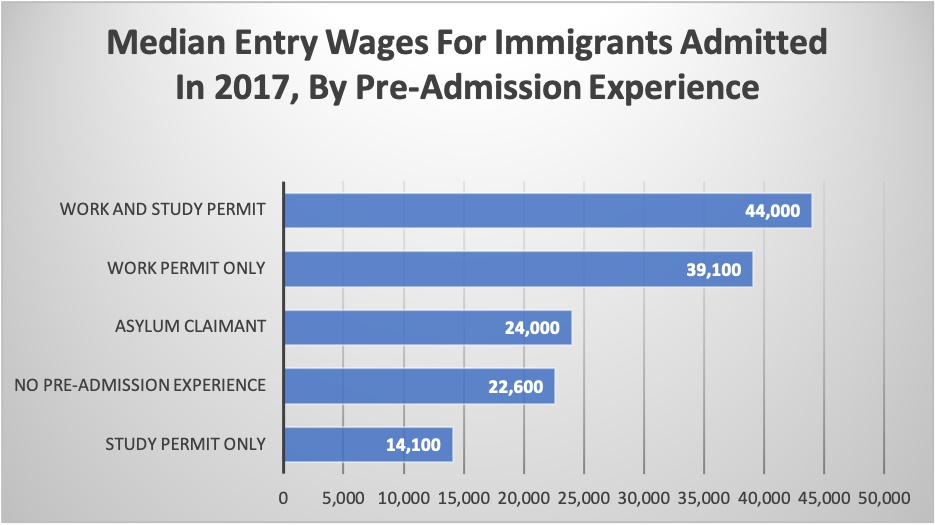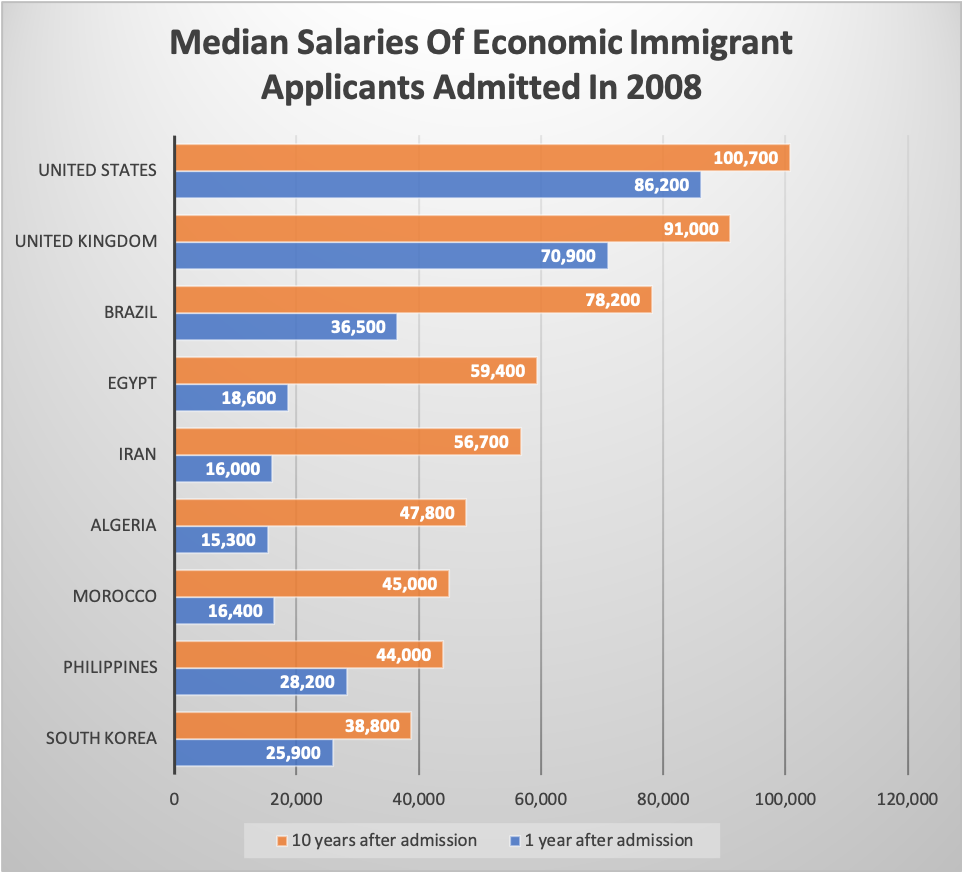
A Statistics Canada report released this week reveals immigrants coming to Canada are enjoying higher incomes but are still earning less overall than Canadians.
“The median entry wage for immigrants admitted to Canada in 2017 was the highest to date, reaching $30,100 in 2018,” state the authors of the report by Canada’s statistical services agency.
“This value surpassed the previous high of $26,500 for 2017 outcomes of immigrants admitted in 2016.”
Canadians, by comparison, had a median wage of $37,400 in 2018, 24.2 per cent higher than the median wage for immigrants overall that year.
A median wage is sometimes considered to be more representative of a situation than an average wage. An average wage is the total of all the wages for a group of people divided by the number of people in that group.
But a median wage is the income in the middle of a range of wages ranked from lowest to highest for a set group of people.
In Canada, that median wage for immigrants has grown steadily since the arrival of Canada’s Express Entry system six years ago and the subsequent rise in the percentage of immigrants who move to Canada under economic programs.
Read More
Canada Is World’s Top Place to Study, According To New Ranking
New Canada COVID-19 Restrictions See Flights To Mexico and Caribbean Cancelled
Ontario Protects Temporary Foreign Workers By Upping Health and Safety Inspections
In 2016, only 52.6 per cent of new permanent residents to Canada came to the country through economic programs. By 2018, that had steadily increased to just over 58 per cent on a growing base of new arrivals.
“In recent years, the profile of immigrants admitted to Canada has changed,” notes Statistics Canada.
As a bigger chunk of immigrants became new permanent residents through the Express Entry system in the past few years, more of them were also subjected to that system’s requirement for a Labour Market Impact Assessment (LMIA).
In an LMIA, the impact on the local market of the immigrant taking a job is indicated.
And to make things fair for newcomers, the LMIA process usually requires that the applicant’s job offer letter show he or she will be paid at least the same amount as the median wage for Canadians in such positions.
The trend towards more immigrants coming to Canada under economic programs also means more of them are arriving with Canadian work experience – and that helps them command higher wages.
“Compared with previous years, more immigrants admitted in 2017 had pre-admission experience in Canada, such as having held a work or study permit or having claimed refugee status before admission,” notes Statistics Canada.
“Pre-admission experience, which can provide immigrants with language skills and knowledge of the job market, can help immigrants settle more quickly than those with no pre-admission experience.”
When immigrants snag a work permit and come to Canada with previous work experience, their salaries are typically even higher than the median wage for Canadians.
In the 2018 tax year, immigrants who had arrived in Canada the previous year and had both a study and work permit had a median entry wage of $44,000. Even those with only a work permit had a median wage of $39,100 that year.
That’s higher than the Canadian median wage that year.
But it’s not all immigrants who are commanding those higher salaries. Immigrants who came to Canada without pre-admission experience had a median wage of only $22,600, far less than the Canadian median wage.
“While immigrants with study experience only have a lower median entry wage, they tend to be younger than immigrants with other types of pre-admission experiences and may continue studying after admission, which contributes to strong wage catch-up over time,” reports Statistics Canada.
Big factors in helping newcomers land higher wages in Canada are knowledge of the country’s two official languages and their ability to get their foreign credentials recognized by Canadian employers.
The importance of those two factors in securing higher wages both upon arrival and a decade after being in Canada becomes immediately apparent when looking at which newcomers command the highest and lowest salaries by their country of origin.
Among immigrants who came to Canada in 2008, those who earned the least were Algerians who had a median wage of $15,300. Those who earned the most were immigrants born in the United States who had a median wage of $86,200.
Ten years later, American immigrants who had come to Canada in 2008 were still at the top for earnings with a median wage of $100,700. Those at the bottom were South Koreans with a median wage of $38,800.
Low starting wages upon arrival to Canada, though, are only that. A starting wage. Many immigrants to Canada substantially increase their earning power over the years.
Ten years after arrival in Canada, immigrants from Iran saw their median wage increase by 254.4 per cent. Those from Egypt saw median wage increases of 219.4 per cent during that decade and those from Algeria enjoyed a jump in their median wage of 212.4 per cent.
“In 2018, economic immigrant principal applicants from the top source countries of immigration over the last 10 years all reported median wages exceeding the Canadian median wage of $37,400,” notes Statistics Canada.



